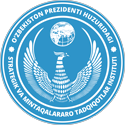ISRS: Central Asia needs to create a new model of regional economic cooperation that will unlock its manufacturing and transport potential

This opinion was expressed by Akramjon Nematov, First Deputy Director of the Institute for Strategic and Regional Studies under the President of the Republic of Uzbekistan, who addressed the Expert Meeting “Central Asia 2030: Visions of the Future”, held on January 20 this year, in Astana.
In particular, in answering the question of what should determine the paradigm of economic cooperation in Central Asia, the expert emphasized that it is important to speak first of all about cooperation and consider the creation of conditions for healthy competition as an important factor in achieving its effectiveness.
“Only in this way can the main goal of regional cooperation be achieved – the creation of an architecture of multilateral economic cooperation that can not only effectively meet the needs of the intra-regional market, but also ensure the competitiveness of the economies of our states in foreign markets”, the ISRS representative noted.
Mr. Nematov noted: “we should strive to create a new model of regional economic cooperation that will allow us to unlock the manufacturing and transport potential of Central Asia, integrate it into transport, logistics, and international production chains of high added value, and make the region more self-sufficient and sustainable in the face of external shocks.
According to the ISRS Deputy Director, the choice of cooperation as a priority for regional cooperation is evidenced by the launch and holding of the Consultative Meetings of the Heads of State of Central Asia since 2018, the adoption of the roadmap for 2022-2024 at the third summit of the leaders of the countries of the region in Turkmenbashi, which provides for holding regular meetings of heads of energy, transport, agricultural, water management, environmental departments, as well as those responsible for digitalization, organization of economic, investment and regional forums.
“Our countries are actively introducing and developing new forms of economic cooperation, which significantly strengthen cooperation ties, increase the industrial, production, trade and economic potential of the states of the region. Interstate investment funds and companies are being created, projects for the construction of border industrial and commercial zones are being implemented, and regional business forums are regularly held”, Mr. Nematov said.
According to him, thanks to this approach, the dynamic economic growth of the region is observed. Thus, the total foreign trade turnover of Central Asia from 2017 to 2021 increased by 54% from $92 billion to $167 billion, while the share of intra-regional trade increased from 7 to 10%.
A capacious, attractive market for foreign investors is being formed. At a time when foreign direct investment (FDI) inflows decreased by 35% worldwide in 2019-2020, growth was observed in Central Asia. In particular, even in the pandemic year 2020 by 3%, and in 2021 by 71%. In 2021, the region attracted more than $34 billion of FDI, while in 2016-2021, the share of investments in Central Asia in the total volume in the world increased from 1.6% to 2.5%. In general, today the volume of accumulated investments, according to the EDB, is 211 billion, which is twice as much as in 2010.
As a result, he added, the growth rate of regional GDP in recent years has been within 6% and, despite the crisis in the global economy, by the end of 2022, according to preliminary estimates, it will be more than 4%, and in 2023 it is expected at around 5%, bringing the region’s GDP to $400 billion.
This, the expert noted, “is an interesting trend. During the period of maintaining regional cooperation in the first years of 2000, the GDP growth rate averaged 9%, in subsequent years, after moving away from regional cooperation, this figure fell to 3% and, with the resumption of regional cooperation, rose again to 6%. This, of course, speaks in favor of regional cooperation”, Akramjon Nematov concluded.






